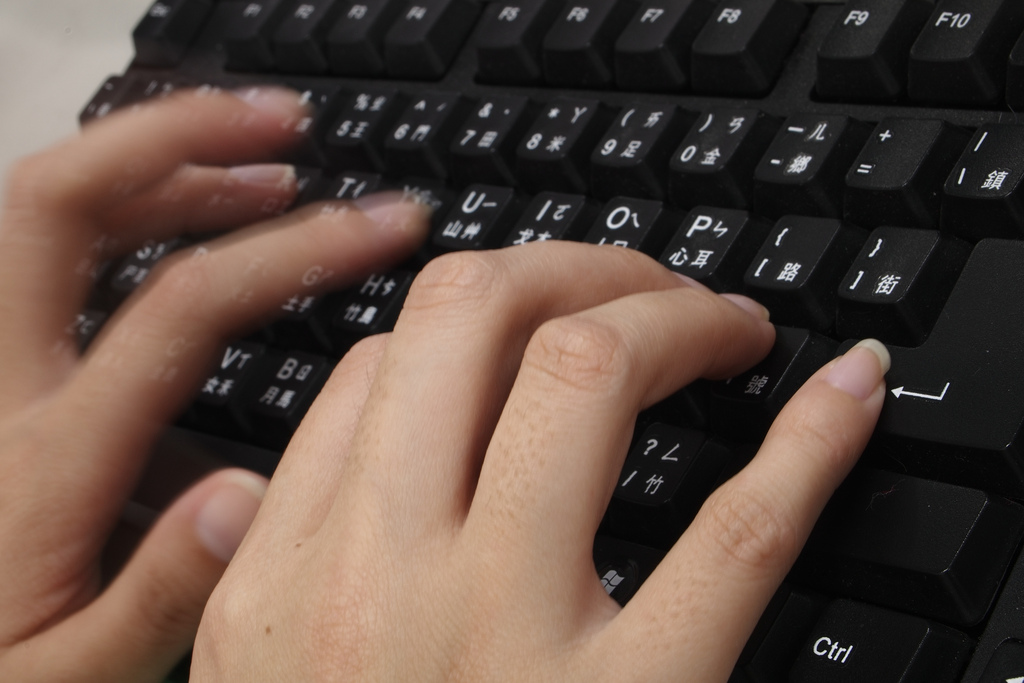Let Your Hands Do the Talking: The Fastest Language to Write
For any of you who ever had the need to type fast, you have probably tried everything from Mavis Beacon to voice typing to give yourself that extra speed. And for those of you who like to jot down first, type up later, we are sure you have dabbled with the joy that is Teeline.
But is there a language that is fastest for either typing or writing by hand? Is there one that will get your point across quicker and with more accuracy (and potentially better handwriting) than your own native tongue?
Let’s take a look!
At the tip of your fingers…
Photo via Flickr
…because finding the fastest typing language is caught up in all sorts of minefields. Most of the western world uses the QWERTY keyboard setup, although in many European and Spanish-speaking countries you can find the AZERTY instead. There is also the DVORAK, said to be the most ergonomically-pleasing keyboard to use, but if you’re a creature of habit, making that switch might be difficult.
Of course, these keyboard choices are all well and good for those using the Roman alphabet; Chinese is input by using a pinyin keyboard which is ingenious and allows the writer to only enter the first letter of every syllable to ‘predict’ what the word will be, there is the Arabic keyboard for Arabic alphabet-using languages, and a whole other host of keyboards for other languages as well.
Learning a new language? Check out our free placement test to see how your level measures up!
Making an educated guess
Perhaps it is easier to look at which languages have the simplest alphabet, with the theory that more simplicity in this area would therefore make the language quicker to write (or type).
We have a couple of options here. Hangul, the alphabet used for writing the Korean language, has been in use since the 15th century. It has 19 consonants and 21 vowels, and these are arranged into blocks that mean for simple transcribing of syllables. This results in a relatively small phonetic alphabet, and on a Korean keyboard there are only seven characters that require the shift key – think about that in comparison with capitalisation of proper nouns in English, for example.
Hawaiian is our second contender here, having been in use since the 18th century and adapted from English by American missionaries wanting to print the bible in Hawaiian. There are a tiny thirteen letters in the Hawaiian alphabet, comprised of eight consonants and five vowels. Generally speaking Hawaiian uses the standard QWERTY keyboard with additional keys for the special characters only used for Hawaiian, but it still sounds like a quick language to type to us.
Do you agree or disagree?

Photo via Pexels
Chinese wins this round…
Whether you write by hand or type, Chinese appears to be the quickest language to scribe in all round.
If you are writing by hand, you have your 楷书 (kai shu), or standard style, 行书 (xing shu), or walking style, and 草书 (cao shu), or running style. In simple terms, think of this as the difference between writing in block letters and joined up handwriting. Kai shu takes the longest to master and is what children are taught in schools; there are some 3,000 different characters to memorise. Xing shu allows for smoother transitions between characters and means the pen has to leave the page less, which means more ideas per minute! Cao shu is the fastest of the three but if not written well is incredibly illegible.
Sogou Pinyin has become possibly the most popular method of Chinese language entry. We mentioned its efficiency earlier, because to write using Sogou means you can often write entire sentences just with the first letter of each syllable. Sogou allows for extensions using things like cell dictionaries and mouse writing; it is a constantly updating, living alphabet that allows for customisation and the quickest entry method possible.
There are, of course, pinyin services offered by both Microsoft and Google; in fact Google almost got itself into hot water with its initial pinyin release that seemed to be based entirely on Sogou’s own. Whichever version you use, if you know what you are doing, typing in Chinese seems to be the quickest way to get your ideas down.

Photo via Wikimedia
Of course, a lot of this is pure speculation since there does not appear to have been many studies conducted about language writing speeds. Linguists out there – can we be credited if you decide to choose this subject for your dissertations?
We hope you have enjoyed are brief look into the fastest languages so far. Next time, we’ll be looking at which is the quickest language to read.
Until then!



